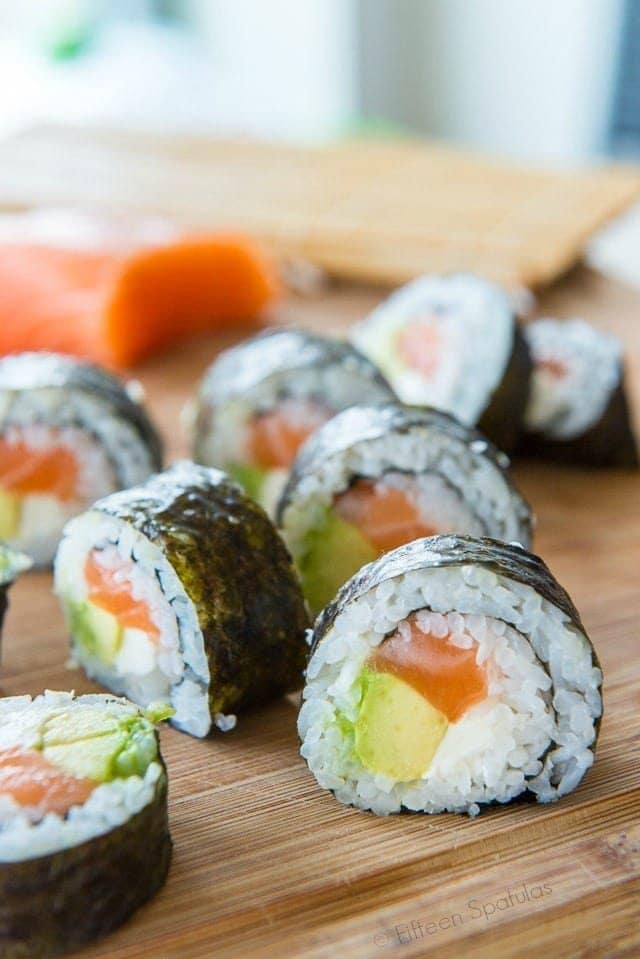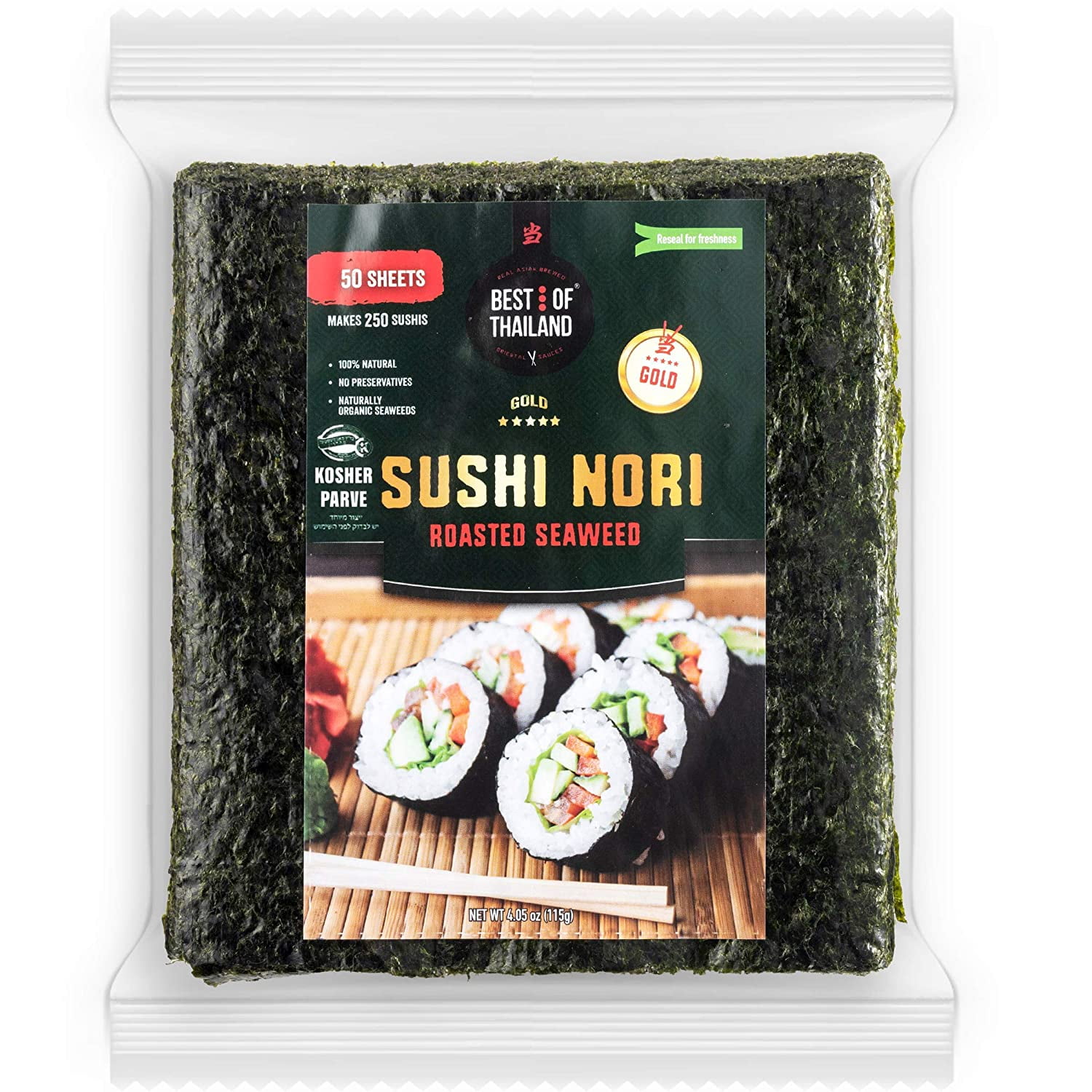How To Make Traditional Japanese Sushi For Beginners

Imagine stepping into a bustling Tokyo sushi bar, where the aroma of fresh fish and vinegared rice fills the air. The sushi chef, with deft hands and a sharp knife, crafts delicate rolls and nigiri with precision and grace. Now, picture bringing that experience into your own kitchen. Making traditional Japanese sushi at home might seem daunting, but with the right guidance, it can be as enjoyable as it is delicious. Let's dive into the world of sushi rolling, nori sheets, sushi rice, raw fish, and sushi vinegar to create your own culinary masterpiece.
Understanding the Basics of Traditional Japanese Sushi
Before we start, it's essential to understand what traditional Japanese sushi is. Sushi is a Japanese dish consisting of prepared vinegared rice, accompanied by other ingredients such as raw fish and vegetables. The term "sushi" refers to the rice itself, not the fish or other toppings.
The Essential Ingredients
Sushi Rice
Sushi rice is the foundation of any traditional Japanese sushi recipe. It's made by mixing steamed short-grain rice with a blend of rice vinegar, sugar, and salt. The result is a slightly sticky rice with a tangy flavor that complements the other ingredients.
Nori Sheets
Nori sheets are thin, dried seaweed sheets used to wrap sushi rolls. They provide a crisp texture and a mild, oceanic flavor. Nori is rich in nutrients and adds a unique umami taste to your sushi.
Raw Fish
Raw fish is a staple in many sushi recipes. Common choices include tuna, salmon, and yellowtail. Ensure you use sushi-grade fish, which is safe to eat raw. If you're not comfortable with raw fish, you can use cooked seafood or vegetables instead.
Sushi Vinegar
Sushi vinegar is a key ingredient in making sushi rice. It's a blend of rice vinegar, sugar, and salt that gives the rice its distinctive flavor. You can find sushi vinegar in most grocery stores or make your own at home.
Preparing Sushi Rice: The Foundation of Your Sushi
The first step in making traditional Japanese sushi is preparing the sushi rice. Here’s a simple recipe to get you started:
Ingredients
- 2 cups short-grain sushi rice
- 2 cups water
- ½ cup sushi vinegar (or make your own with ½ cup rice vinegar, 2 tbsp sugar, and 1 tsp salt)
Instructions
- Rinse the Rice: Rinse the sushi rice under cold water until the water runs clear. This removes excess starch and improves the texture.
- Cook the Rice: Combine the rice and water in a pot. Bring to a boil, then reduce the heat to low, cover, and simmer for about 15 minutes. Remove from heat and let it rest, covered, for another 10 minutes.
- Season the Rice: Transfer the cooked rice to a large bowl. Gently fold in the sushi vinegar, being careful not to mash the rice. Allow the rice to cool to room temperature before using.
Rolling Sushi: Mastering the Art
Now that you have your sushi rice ready, it's time to learn the art of sushi rolling. Here’s a step-by-step guide to making a classic California roll:
Ingredients
- Prepared sushi rice
- 4 nori sheets
- ½ cucumber, cut into thin strips
- 1 avocado, sliced
- ½ lb crab meat (imitation crab is fine)
- Soy sauce, wasabi, and pickled ginger for serving
Equipment
- Bamboo sushi mat
- Sharp knife
- Plastic wrap
Instructions
- Prepare Your Workstation: Cover your bamboo sushi mat with plastic wrap to prevent the rice from sticking.
- Place the Nori: Lay a nori sheet, shiny side down, on the mat.
- Spread the Rice: With wet hands, spread a thin layer of sushi rice evenly over the nori, leaving about an inch at the top.
- Add the Fillings: Arrange a line of cucumber, avocado, and crab meat horizontally across the rice, about an inch from the bottom.
- Roll the Sushi: Using the mat, carefully lift the edge of the nori and rice over the fillings. Tuck the edge in and continue rolling tightly, using the mat to shape the roll.
- Slice the Roll: Remove the mat and plastic wrap. Using a sharp knife, slice the roll into 6-8 pieces.

Variations and Tips for Beginners
Hosomaki: Thin Rolls
Hosomaki is a type of thin sushi roll that typically contains only one filling. It's a great starting point for beginners.
Ingredients
- Prepared sushi rice
- 2 nori sheets
- ½ cucumber, cut into thin strips
- 1 carrot, cut into thin strips
Instructions
- Follow the same steps as the California roll, but use half a nori sheet and a single filling.
- Roll tightly and slice into thin pieces.
Nigiri: Hand-Formed Sushi
Nigiri is a type of sushi made by pressing sushi rice into a small rectangular shape and topping it with a slice of raw fish.
Ingredients
- Prepared sushi rice
- Sushi-grade raw fish (tuna, salmon, etc.)
- Wasabi and soy sauce for serving
Instructions
- Wet your hands and form a small rectangle of sushi rice.
- Place a thin slice of raw fish on top.
- Serve with wasabi and soy sauce.
Common Mistakes and How to Avoid Them
Making sushi at home can be challenging, but avoiding common mistakes will help you succeed.
Overcooking the Rice
Overcooked rice can become mushy and lose its texture. Ensure you follow the cooking instructions carefully and let the rice rest after cooking.
Not Using Fresh Ingredients
Fresh ingredients are crucial for the best flavor. Use sushi-grade fish and fresh vegetables for optimal taste and safety.
Rolling Too Loosely
A loosely rolled sushi will fall apart. Use the bamboo mat to apply gentle pressure as you roll, ensuring a tight and compact shape.

Conclusion: Embrace the Journey
Making traditional Japanese sushi at home is a rewarding experience that brings the flavors of Japan to your kitchen. From preparing the perfect sushi rice to mastering the art of sushi rolling, each step is a journey in itself. Don't be afraid to experiment with different fillings and techniques. Remember, practice makes perfect, and every roll you make brings you one step closer to becoming a sushi master.
So, are you ready to embark on this culinary adventure? Grab your nori sheets, sharpen your knife, and let's get rolling!
FAQs
What is the best type of rice for sushi? Short-grain sushi rice is the best type for making traditional Japanese sushi. It has the right stickiness and texture for rolling and shaping.
Can I use regular vinegar instead of sushi vinegar? While regular vinegar can be used, sushi vinegar provides a specific flavor profile that enhances the taste of sushi rice. You can make your own sushi vinegar by mixing rice vinegar, sugar, and salt.
Is it safe to eat raw fish at home? Ensure you use sushi-grade fish, which is specifically prepared to be eaten raw. Always purchase from a reputable source and handle with care to avoid contamination.
How do I store leftover sushi? Sushi is best enjoyed fresh, but if you have leftovers, store them in an airtight container in the refrigerator. Consume within 24 hours for the best quality and safety.
What are some vegetarian options for sushi? Vegetarian sushi can be just as delicious. Use fillings like cucumber, avocado, carrots, and bell peppers. You can also try making inari sushi, which is sushi rice stuffed into seasoned tofu pouches.
0 Response to "How To Make Traditional Japanese Sushi For Beginners"
Post a Comment